| The Game |
● It is a game played between two teams, each with 5 players.
● The winner is decided by the total number of points achieved during the 30-minute
game.
● The leading team uses red balls (odd numbers) and the following team uses white
balls (even numbers).
● The members of the leading team and the following team take turns to stroke
the ball in the right order, passing the ball through the three gates (Gate 1
to Gate 3) on the court, with the game finishing, that is "Finish" or "Agari"
when the ball strokes the goal-pole.
|
|
|
|
| Team Structure |
● A team consists of 5 players and up to 3 substitutes, among
whom one shall be designated the captain.
● Each team may have one manager specific to the team.
|
| one manager specific |
5 players |
3 substitutes |
|
|
|
|
| Start Stroking |
|
● The stroker places his/her ball, that is, the stroker's ball,
in the start area and strokes the ball so it passes through Gate 1. If the ball
doesn't pass through Gate 1, the stroker's ball is returned to the stroker, and
once all other strokers have played once, the stroker once again strokes the ball
so it passes through Gate 1. (A ball that doesn't pass through Gate 1 is not permitted
onto the court).
|
| Tha ball passes through Gate1 |
Tha ball does 't pass through Gate1 |
|
|
|
|
| Out-ball |
|
● If, as the result of a stroke and spark, the ball moves outside
the inside line, that ball becomes an out-ball. If, in the next stroke, if an
out-ball that is hit inside the court ends up touching another ball inside the
court, this is regarded as a foul. Even if the out-ball passes through a gate,
it will not be recognized as a "Gate Tsuka".
|
|
|
|
| Touch and Sparking Touch and Sparking play
important roles in the game |
What is a "Touch"
When the stroker's ball touches another ball (which can be of your team or of
the other team), this is called a "Touch". If the stroker's ball and the touched
ball remain within the inside line, the stroker has the right to spark.
★Note
After a Touch, stroke the ball so that both your own ball and the other ball remain
within the inside line
. |
|
|
| How to "Spark" |
(1) Pick up the Touched ball.
(2) Step firmly on your own ball where it has stopped (using your left foot if
you are a right-handed stroker).
(3) Place the touched ball so that it is in contact with your own ball, and in
the direction that you want to stroke the ball.
(4) Remove your hand from the touched ball that you placed next to your own ball.
(5) Stroke your own ball so that only the touched ball moves.
(6) Remove your foot from your own ball. A successful spark gives the player the
right to stroke once more. |
|
★Note
When sparking, consider the overall development of the game and stroke the touched
ball in a direction that is advantageous for your team. (For example, if the ball
belongs to your team, pass it through a gate, and if it belongs to the other team,
make the ball an "out of bounds ball".)
|
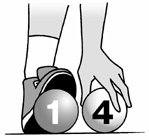 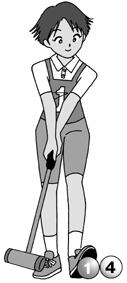 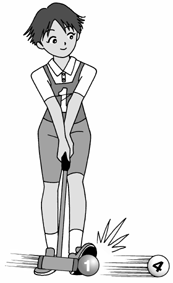 |
|
| Team skills |
●Hitting the ball into a position that is relevant to
his/her team's next stroker.
|
If the ball formation is as shown in Diagram , the stroker of
Red 1 hits his/her ball so that it goes between Red 3 and Red 5. Then, the next
stroker of Red 3, by touching Red 1, sparking and gaining the right for continuous
play, can touch Red 5.
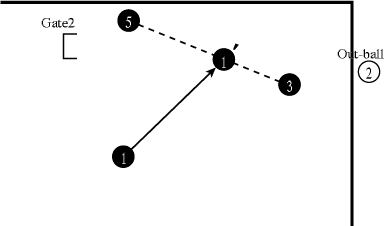 |
|
●Sparking to send the ball to the position of the stroker's team
|
If the balls are in a formation as shown in Diagram , Red 1 touches
Red 5, and sparking then sends Red 5 near Red 3, and Red 1, as a result of continuous
play, sends the stroker's ball near Red 3. However, the stroker should check that
White 2's position isn't going to affect Red 3.
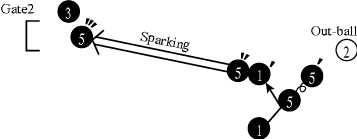 |
|
●Sparking to send the ball to the other team's position
|
If the ball formation is as shown in Diagram , Red 1 touches Red
3, and Red 3 is sent near the other team's White 4 by sparking, and Red 1, as
a result of continuous play, sends his/her ball near Red 3. However, the stroker
should check that White 2's position isn't going to affect Red 3.
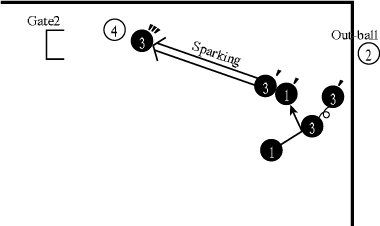 |
| |
|
● In the event of a successful "Gate Tsuka" and "Touching the
other ball/s" in succession, two continuous plays are allowed after a successful
"Spark".
|
 |
|
|